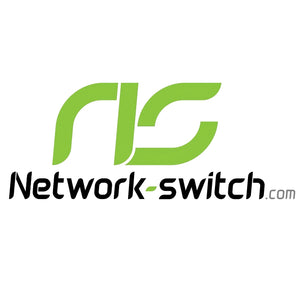Table of content
Ethernet switches are an essential component of any network infrastructure, connecting devices into a network that can, without switches, become extremely complicated. When referring the Ethernet switch port, you will also hear about the SFP port, which is right there with impressive features including flexible and versatile, and fitting into the port on a switch. What is an SFP Port? This guide will thoroughly explain what an SFP port is, the types available, supported media, comparisons with traditional RJ45 ports, benefits, and future trends.

What is the SFP Port on a Gigabit Switch?
An SFP port of a Gigabit switch is a port which designed to accommodate an SFP (Small Form-factor Pluggable) transceiver. With SFP SFP+ modules, the network administrators can customize the network and there are possibilities of buying an SFP switch or SFP+ switch to complete the network rather than getting a new switch.
Example: Consider a firm that first employs copper Ethernet cables for serving short distances. They later expand to a new building 1 km away. Instead of replacing the switch completely, fiber optic SFPs are plugged in the original SFP ports to connect to a high speed fiber link.
Common Types of SFP Ports
① SFP Combo Ports
Combo ports are uplink ports, which come with two different interfaces namely SFP interface and an RJ45 Etherent interface. But at any time only one of the ports can be up.
② SFP Uplink Ports
SFP uplink ports allow users to connect with fibre, enabling high-speed connections between switches or switches and routers
On the campus network, there are a lot of access switches(JH22A series), which are distributed in the buildings, and are connected with the SFP uplink ports to a core aggregation switch centrally, to achieve high-speed data exchange within departments and the entire campus.
Which types of media does SFP support?
Various types of media are supported via the SFP ports, largely depending on what specific type of SFP module is installed:
Single-mode Fiber (SMF): Long range based on 10km, 40km, or even 100km.
Multimode Fiber (MMF): Fiber connections over shorter distances (typically up to 550 meters).
Copper (RJ45) Modules: Connect using off-the-shelf Ethernet cables (Cat5e/Cat6) up to 100m.
Ethernet switches are essential for contemporary network implementations that allow connections between devices to function effortlessly. In the realm of the Ethernet switch, SFP port is well-known since it’s flexible, modular and simple. In this tutorial, you’re going to learn all you need to know about SFP ports, what they are, what SFP port types are, media applications supported, and the difference between SFP and RJ45.

SFP Ports vs. RJ45 Ports: An In-depth Comparison
Understanding the key differences helps select the most suitable port type for your networking needs:
① Connection Types
| Port Type | Supported Connections | Typical Use Cases |
| SFP | Fiber optic (single-mode/multimode), copper (via transceiver modules) | Inter-building links, backbone networks, high-speed requirements |
| RJ45 | Copper Ethernet cables (Cat5e, Cat6, Cat7) | Short-distance connections (within offices or single buildings) |
② Maximum Distance
| Port Type | Maximum Distance | Ideal Scenario |
| SFP (Single-mode fiber) | 10 km to over 100 km | Long-distance (metro/city-wide networks, campuses) |
| SFP (Multimode fiber) | Up to 550 meters (typical) | Short-distance (data centers, enterprise LANs) |
| RJ45 (Copper) | Up to 100 meters | Local network connections within rooms or floors |
Benefits of SFP Ports
There are many benefits with SFP ports :
Flexible and Scalable: Quickly change transceiver modules without having to purchase new equipment to support new requirements.
Long-range Connectivity: Perfect for long distance connections through the standard Ethernet length (100 m), works well on campus or inside the city.
Increased Data Rates: SFP ports can accommodate advanced modules (like SFP+, SFP28, QSFP) supporting speeds from 1Gbps to 100Gbps and beyond.
Cost-effective: Increase network speed and performance with this cost-effective module instead of purchasing new equipment.
Progress and trends of SFP port
When it comes to advanced SFP technology, the trend is all about keeping up with ever-growing demands for throughput, speed and port density:
SFP+: Supports up to 10Gbps data rates, extensively used in data centers and enterprise networks.
SFP28: Up to 25Gbps, for a very high speed in newer data center applications, especially for server-to-switch connections.
QSFP (Quad Small Form-factor Pluggable): Supports speeds of 40Gbps, 100Gbps, and beyond, meeting the needs of cloud computing and large-scale data centers.
sidebar textBi-Directional (BiDi) SFP: It is possible to send data in both directions by using only a single fiber strand, which saves the double fiber cost.
Conclusion
Gigabit SFP ports provides flexible connectivity options and supports a wide range of applications from low-cost Ethernet to high-speed, full-fiber solutions. Understanding their capabilities and flexibility, businesses and the network managers that run them can easily lay out a plan for how to build and scale a networking infrastructure.
Do visit a professional supplier Network-switch for ease of affordable, reliable and good quality SFP transceivers and Gigabit switches. com. They provide a wide choice of products and professional support for various networking uses.
For a wide selection of high-quality SFP modules and Gigabit switches, consider visiting Network-switch.com. They offer a comprehensive range of networking products to meet diverse requirements.
Did this article help you understand network switches and how they work? Tell us on Facebook and LinkedIn . We’d love to hear from you!


 https://network-switch.com/pages/about-us
https://network-switch.com/pages/about-us


